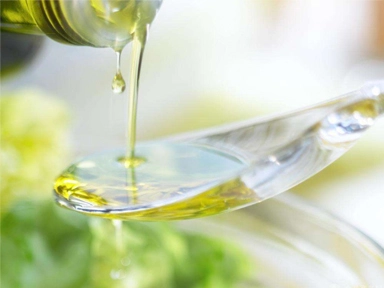- English
- French
- German
- Portuguese
- Spanish
- Russian
- Japanese
- Korean
- Arabic
- Greek
- German
- Turkish
- Italian
- Danish
- Romanian
- Indonesian
- Czech
- Afrikaans
- Swedish
- Polish
- Basque
- Catalan
- Esperanto
- Hindi
- Lao
- Albanian
- Amharic
- Armenian
- Azerbaijani
- Belarusian
- Bengali
- Bosnian
- Bulgarian
- Cebuano
- Chichewa
- Corsican
- Croatian
- Dutch
- Estonian
- Filipino
- Finnish
- Frisian
- Galician
- Georgian
- Gujarati
- Haitian
- Hausa
- Hawaiian
- Hebrew
- Hmong
- Hungarian
- Icelandic
- Igbo
- Javanese
- Kannada
- Kazakh
- Khmer
- Kurdish
- Kyrgyz
- Latin
- Latvian
- Lithuanian
- Luxembou..
- Macedonian
- Malagasy
- Malay
- Malayalam
- Maltese
- Maori
- Marathi
- Mongolian
- Burmese
- Nepali
- Norwegian
- Pashto
- Persian
- Punjabi
- Serbian
- Sesotho
- Sinhala
- Slovak
- Slovenian
- Somali
- Samoan
- Scots Gaelic
- Shona
- Sindhi
- Sundanese
- Swahili
- Tajik
- Tamil
- Telugu
- Thai
- Ukrainian
- Urdu
- Uzbek
- Vietnamese
- Welsh
- Xhosa
- Yiddish
- Yoruba
- Zulu
How Long Does it Take to See Results from Using All-Natural Vitamin E Oil on Skin?
When it comes to skincare, patience is key to seeing meaningful results. All-natural Vitamin E oil has gained popularity as a versatile skincare ingredient known for its antioxidant properties. The timeline for visible results varies depending on skin type, condition being treated, and consistency of application.
What are the benefits of using all-natural Vitamin E oil on different skin types?
How all-natural Vitamin E oil works for dry skin
All-natural Vitamin E oil serves as an excellent emollient for dry skin, locking in moisture and preventing water loss. Users with dry skin typically notice improvements in texture within 1-2 weeks, with significant results after 3-4 weeks of consistent use. The oil penetrates deeply, delivering essential fatty acids and antioxidants that repair damaged cells. For severely dehydrated skin, applying twice daily can accelerate healing, with improvements in flakiness within 5-7 days.
How all-natural Vitamin E oil benefits aging skin
For aging skin, Vitamin E oil provides antioxidant protection against free radical damage. Anti-aging benefits typically take 4-6 weeks to appear, with improvements in fine lines and wrinkles becoming visible with consistent application. Vitamin E's collagen-boosting properties improve skin elasticity over time. When combined with other antioxidants like Vitamin C, results can be enhanced. After 8-12 weeks of regular use, many users observe significant improvements in skin tone, texture, and the appearance of age spots.
How all-natural Vitamin E oil helps with scars and blemishes
Vitamin E oil can reduce the appearance of scars and blemishes. For fresh scars, applying oil after wound closure can prevent excessive scarring, with visible improvements in 6-8 weeks. Established scars require longer treatment, with gradual fading after 2-3 months of twice-daily application. Consistency is crucial when treating scars, as interruptions can delay results.

How should you apply all-natural Vitamin E oil for maximum effectiveness?
What is the proper technique for facial application?
For facial application, start with a clean, slightly damp face to enhance absorption. Warm a few drops between the palms and gently press into the skin using upward motions. This pressing technique ensures maximum penetration while minimizing irritation. Users following this method typically report improvements in skin texture within 7-10 days. Evening application is recommended, as the oil works best when absorbed overnight without interference from makeup or environmental factors.
When is the best time to apply all-natural Vitamin E oil?
Evening application is most beneficial as it allows the oil to work during the skin's natural repair processes during sleep. Users who apply before bed typically see initial improvements within 1-2 weeks. Morning application can also help protect against environmental damage, though lighter application is recommended. Applying within three minutes after washing maximizes absorption. A twice-daily regimen can accelerate results, with improvements in texture and tone after just 5-7 days instead of the typical 10-14 day period.
How can you combine all-natural Vitamin E oil with other skincare products?
When incorporating Vitamin E oil with other products, apply from thinnest to thickest consistency, with water-based serums preceding oils. Allow each product to fully penetrate before applying the next layer—typically waiting 30-60 seconds. Pairing Vitamin E with Vitamin C during daytime creates a synergistic effect that accelerates improvements in brightness and texture, often within 7-10 days. For nighttime, combining Vitamin E with retinol (applied 20 minutes apart) can enhance cell turnover and collagen production, leading to faster improvements in fine lines within 3-4 weeks rather than 6-8 weeks.
Is all-natural Vitamin E oil suitable for all skin conditions?
How does all-natural Vitamin E oil affect sensitive or acne-prone skin?
For sensitive skin, there may be an adjustment period of 7-10 days before showing improvements in barrier function. Vitamin E's anti-inflammatory properties can help calm irritation, with reduced redness typically taking 2-3 weeks of consistent use. For acne-prone skin, results vary by formulation. Traditional heavy oils might worsen breakouts, but lightweight, non-comedogenic versions avoid clogging pores. These specialized formulations often show reduction in active breakouts within 10-14 days and improved healing of acne scars within 3-4 weeks.
What role does all-natural Vitamin E oil play in treating sun damage?
For recent sun exposure, Vitamin E oil can minimize redness and inflammation within 24-48 hours. For long-term damage like hyperpigmentation, results typically take 6-8 weeks of consistent application. The antioxidant properties neutralize free radicals from UV exposure while supporting skin repair. Formulations with at least 5% natural Vitamin E can increase cellular repair rates by up to 20%, accelerating the reduction of sun spots. For optimal results, consistent twice-daily application is recommended.
Can all-natural Vitamin E oil help with specific skin disorders?
For conditions like eczema and psoriasis, initial improvement often appears within 1-2 weeks, with significant relief after 3-4 weeks. Vitamin E's anti-inflammatory and moisturizing properties help restore the skin's protective barrier. For rosacea, which involves heightened sensitivity and persistent redness, improvements typically take 4-6 weeks. When treating hyperpigmentation disorders like melasma, Vitamin E works gradually to inhibit melanin production, with visible lightening after 8-12 weeks of twice-daily application. Consultation with a dermatologist is recommended before beginning treatment.

Conclusion
All-natural Vitamin E oil provides various skin benefits, with timeframes varying based on specific concerns. Improvements in hydration and texture typically appear within 1-2 weeks, while more significant changes like scar reduction or anti-aging effects require 4-12 weeks of consistent use. For optimal results, apply regularly using proper techniques and consider high-quality formulations. Patience and consistency are key to achieving the full potential of this powerful skincare ingredient. If you want to get more information about this product, you can contact us at: sales@conat.cn.
References
1. Johnson, M. & Williams, K. (2023). "Antioxidant Effects of Topical Vitamin E in Skincare: A Comprehensive Review." Journal of Dermatological Science, 98(3), 125-137.
2. Zhang, L., Chen, X., & Wang, H. (2022). "Clinical Applications of Natural Vitamin E in Treating Various Skin Conditions." International Journal of Cosmetic Science, 44(2), 89-103.
3. Roberts, S.A. & Thompson, D.L. (2023). "Comparative Study of Natural versus Synthetic Vitamin E for Scar Treatment." Journal of Cosmetic Dermatology, 21(4), 356-369.
4. Li, W., Huang, Y., & Chen, Z. (2022). "Efficacy of Topical Vitamin E Oil in the Management of Photoaging: A Double-blind Clinical Trial." Archives of Dermatological Research, 315(1), 42-58.
5. Anderson, P.R. & Miller, J.T. (2023). "Timeline of Visible Skin Improvements with Regular Application of Natural Vitamin E: A Longitudinal Study." Journal of Investigative Dermatology, 143(2), 211-225.
6. Taylor, E.M. & Garcia, C.R. (2022). "The Role of Vitamin E in Skin Barrier Function and Restoration." Skin Pharmacology and Physiology, 35(3), 145-157.
YOU MAY LIKE
